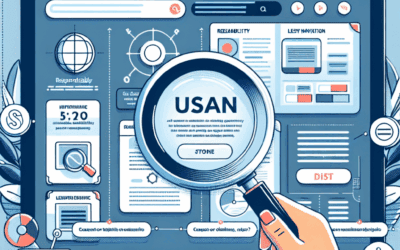Welcome to Entrepreneur Magazine, where we bring you the latest insights and strategies to help you grow your business. In today’s article, we will be taking a deep dive into the world of landing page optimization and how you can use scientific principles to drive more conversions on your website.
Understanding the Basics of Landing Page Optimization
A landing page is the first page that visitors see when they click on a link to your website. It is your opportunity to make a great first impression and convert those visitors into customers. Landing page optimization is the process of improving the performance of your landing page through testing and data analysis.
There are several key elements that play a crucial role in the success of your landing page, including headlines, images, copy, forms, and calls to action. By using scientific principles and data-driven analysis, you can determine the optimal combination of these elements to drive more conversions and ultimately grow your business.
The Science Behind Landing Page Optimization
One of the most important aspects of landing page optimization is A/B testing. This involves creating two versions of your landing page (A and B) with slight variations in elements such as headlines, images, or calls to action. By running these tests simultaneously and analyzing the data, you can determine which version performs better and make data-driven decisions to improve your conversion rate.
Another key scientific principle in landing page optimization is the use of heatmaps and click tracking. Heatmaps visually represent where visitors are clicking on your landing page, allowing you to identify areas of high engagement and areas that may need improvement. By analyzing this data, you can make informed decisions about how to optimize your landing page for maximum conversions.
Best Practices for Driving More Conversions
Now that you understand the science behind landing page optimization, let’s explore some best practices for driving more conversions on your website:
1. Clear and Compelling Headlines
Your headline is the first thing that visitors see on your landing page, so it needs to be clear, compelling, and relevant to your offer. Use data from A/B testing to determine which headlines resonate most with your audience and drive the highest conversion rates.
2. High-Quality Images
Images play a crucial role in capturing the attention of your visitors and conveying your message effectively. Use high-quality, relevant images that align with your brand and appeal to your target audience.
3. Persuasive Copy
The copy on your landing page should be concise, persuasive, and focused on the benefits of your product or service. Use A/B testing to identify the most effective messaging that drives conversions.
4. Simple and Clear Call to Action
Your call to action (CTA) should be prominently displayed on your landing page and clearly communicate the action you want visitors to take. Use data from click tracking to optimize the placement and design of your CTA for maximum conversions.
Conclusion
Landing page optimization is a science that requires careful analysis and testing to drive more conversions on your website. By understanding the key principles and best practices outlined in this article, you can make data-driven decisions that improve the performance of your landing page and ultimately grow your business. Remember to continually test and iterate on your landing page to stay ahead of the competition and maximize your conversion rate.
Thank you for reading and stay tuned for more insights and strategies from Entrepreneur Magazine to help you succeed in the world of business.
Need professional website design? Check out our Web Design Service
Check out all our Digital Marketing Services
Complimentary Web Design Strategy Call




0 Comments